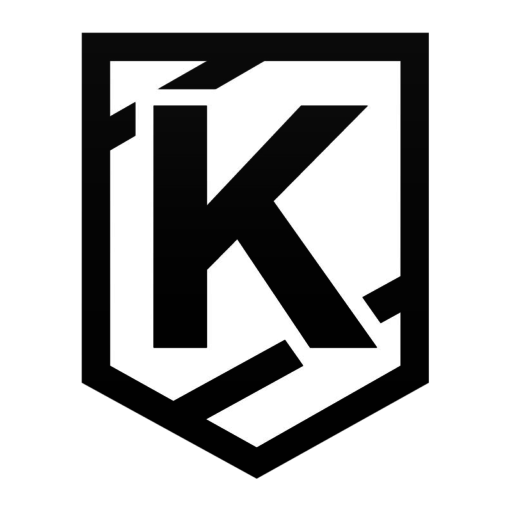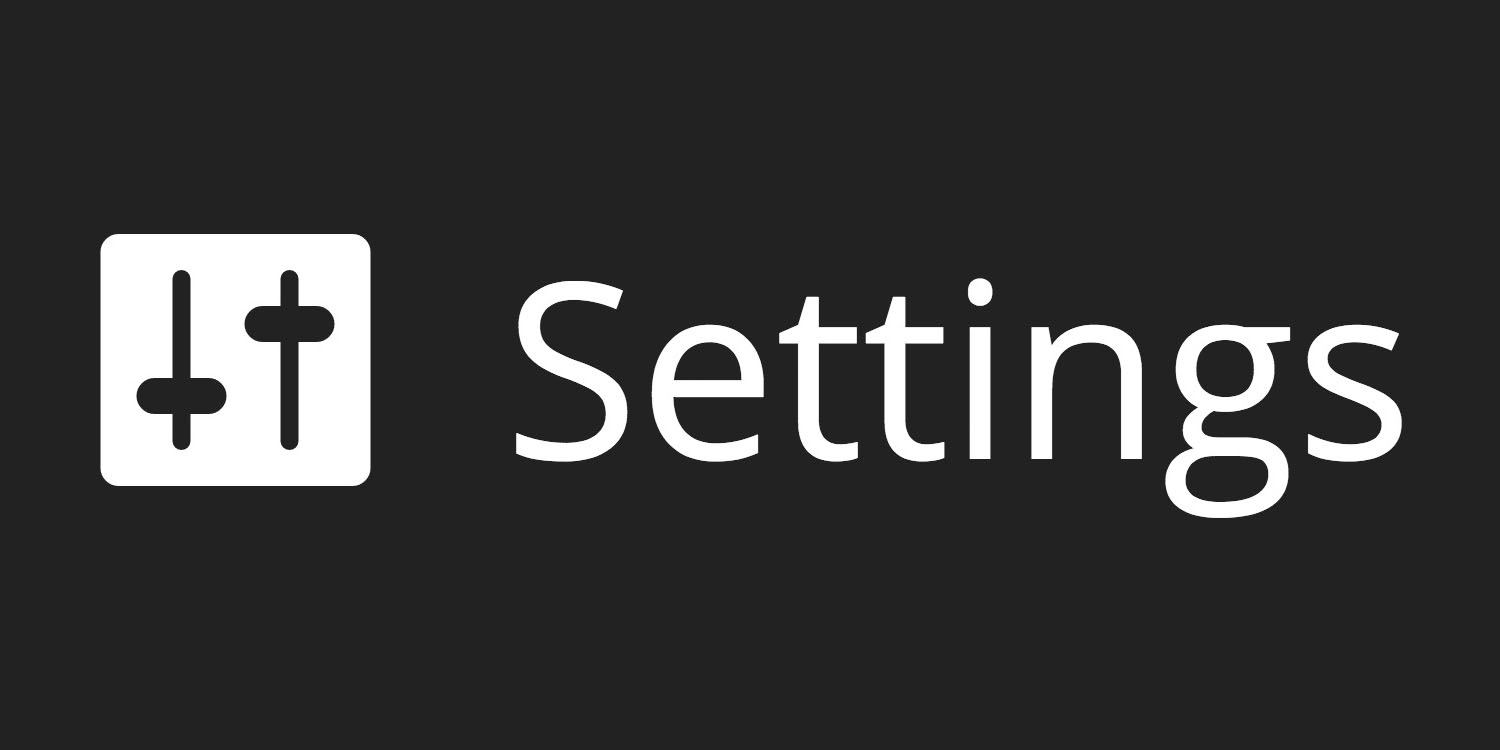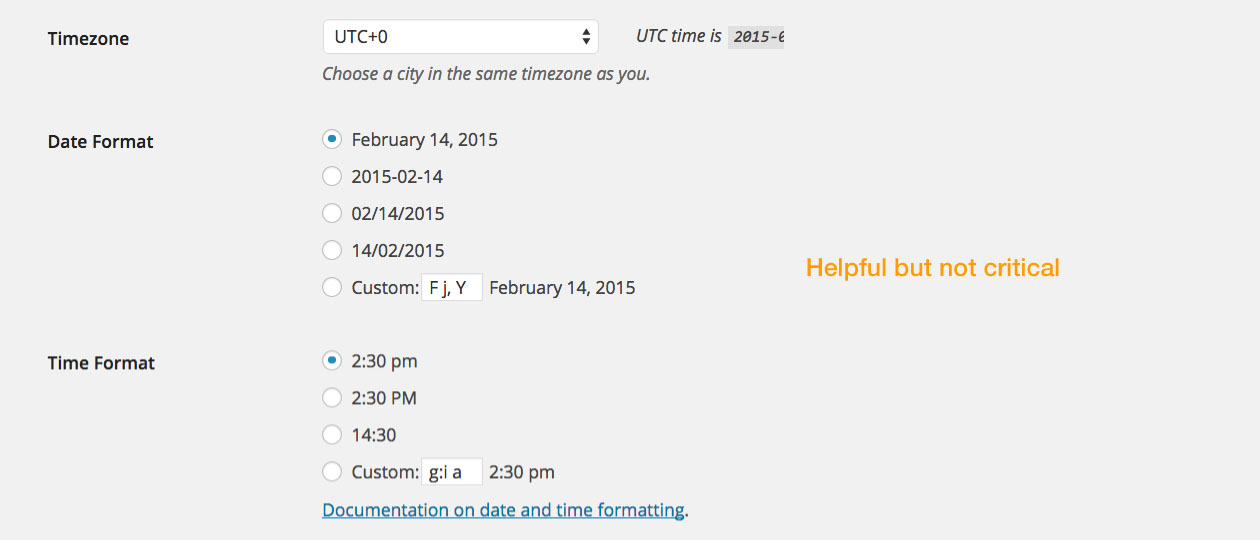Part 1 of this WordPress tutorial covered Dashboard & front page. Part 2 discussed basic content types. In Part 3, now that we’ve got our beginner WordPress client working with publishing basic content types, we can discuss the functionality and display options available to extend those content types.
Below I discuss some common problems I hear from non-WP folks trying to maintain their sites. We developers often take for granted some basic principles of WordPress websites. Beginners don’t. Here’s how to put yourself in a WordPress beginner’s shoes.
[blog_stripe]Settings
The Settings section feels like a dumping ground of options. What little organization there is seems inadequate. For my money, the section begs for a simple-vs.-advanced view. Most of what appears in the General tab applies to a small subset of users and could easily be moved into a series of other, more descriptively-named categories.
I’ve gone through the General Settings tab below, block by block, and provided my thoughts on each setting. If I were a beginner WordPress user, I can’t imagine I’d know anything about these settings and I’d assume they were all equally important—and I’d be wrong.
[/blog_stripe]Site Title
Arguably the most important setting WordPress has, the Site Title controls the name—or identity if you want to get all meta—of the site itself. The good news is that, as with all of WordPress’ settings, the Site Title can be changed quickly and easily anytime.
The WordPress Site Title is used in the <tite> tag of each page’s markup (unless the theme or plugin get in the way). Often the Site Title serves as the <h1> tag, especially on the homepage. And, if Google and SEO are important to you, the <tite> tag and <h1> tag are extremely important.
Tagline
Some themes make use of a site’s tagline. Most newer themes (2013+), in my experience anyway, don’t. The only use I see for the tagline is a meta description or sub-heading on the site’s homepage. But again, if SEO is important to you, you’re probably using a plugin to write custom titles and metas, rendering the Tagline useless again.
Plenty of user experience research says you should have a tagline next to your logo. And this tagline is a good way to do that, if your theme allows for it. But most don’t. This tagline is a holdover from the WordPress of yore. In most cases nowadays, it can be safely ignored.
WordPress and Site URLs
You (your beginner clients) probably shouldn’t mess with these two settings. They’re absolutely critical. 99% of the time they’re going to be identical. In rare cases, they may differ slightly. In either case, if they’re wrong by even one character, the whole website will ‘break’ and be inaccessible to users and, most likely, to your beginner clients. Be very careful with these.
WordPress Address is the URL and folder on your server where the WordPress files are installed. In the vast majority of cases, this is going to be something like http://yourdomain.com. However, in some cases, the files may be installed in a different folder on the server. For example, I’ve installed WordPress at addresses like this before: http://yourdomain.com/wordpress. This is especially common for old websites being converted to WordPress from any other system. There are bound to be lots of old files in the yourdomain.com root. Installing the WP files in a sub-folder (yourdomain.com/wordpress) helps keep servers organized.
Site Address is the URL where visitors will view the site. This is almost guaranteed to be http://yourdomain.com. It can be different than the WordPress address, but it will require a few extra (technical) steps before the website will be ‘working’ and publicly accessible again.
Email Address
This one doesn’t need a long writeup. Add your email address so WordPress can send you important emails like update notifications and password reset reminders. You’ll also be notified of any new user registrations which, depending on your settings in the next option, could be really important for security.
Membership
This one should be called Do You Want Your Site to Be Swiss Cheese? Because that’s kinda what it’s like. Unless you plan on operating a blog with lots of subscribers, commenters, contributors, and other regular authenticated users, this settings should absolutely remain unchecked. Do not let users register for your site unless you’re sure that you really, really need that functionality.
The reason is spam. If you allow users to register, and you miss another important-but-easily-missed security precaution setting under Discussion (which we’ll talk about in a later post), then the auto-spam-bots of the world will eat your website for breakfast. I’ll talk more later about the combination of steps required to allow this nightmare, but the nightmare looks like this:
- Spambots find your site
- They register a fake-but-kinda-real-sounding username
- They go apeshit commenting on all of your posts
- All of these comments contain links to shady, spammy garbage
- Your website becomes a hive where the spambot bees come to swarm and feed and kill your dreams
Sound dramatic? It kinda is. But you get the idea. Don’t allow anyone to register. This setting might as well just say “Any spammer can register.” Still want to check it?
New User Roles
Since you’re not allowing spammers-I-mean-anyone to register, this setting doesn’t matter. You won’t have any new users, therefore you won’t need a new user role defined. Problem solved. But it’s still safest to leave this as Subscriber. Subscribers have absolutely no permissions in the WordPress admin. Play it safe and leave this as Subscriber.
Time & Date
These settings are pretty mundane. Set them to your local timezone settings and stuff. No big deal. Most new themes will allow you to override the date and time format settings anyway. My best guess on why these themes override a standard WP setting is that most users don’t bother to check the Settings page and fill out each of these settings manually anyway. It’s almost like someone should write a giant tutorial explaining to new users how each WordPress settings will effect their site and what to do about it.
Week Start
I’ve been publishing with WordPress for a decade and I have only found one example when this setting matters: calendars. If your site uses an Archives Calendar widget or maybe an event calendar of some sort, this setting will define the first day of each week in the calendar. Otherwise, as far as I can tell, this setting is useless. Why is it placed on the very first Settings screen, you may wonder. Good question.
Language
And finally language. If your site is in English, you should leave this alone. If not, change it accordingly. End of explanation.
[blog_stripe]Next: Reading & Writing Settings
Out of the box, WordPress comes with 6 screens of settings. This post covered only the first one. The next post will cover numbers two and three: Writing & Reading. Stay tuned. And, if you missed them, the first two installments in this WordPress tutorial for beginners are here and here.
[/blog_stripe]









